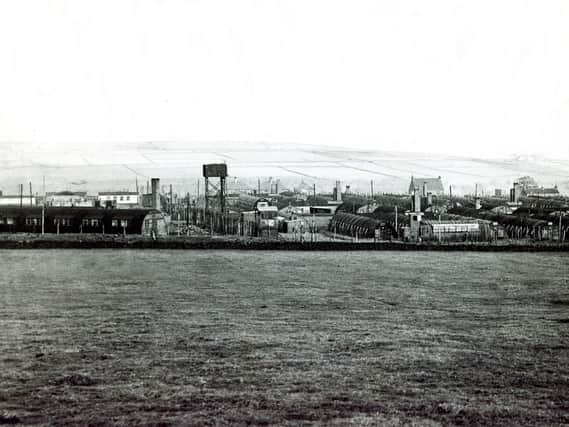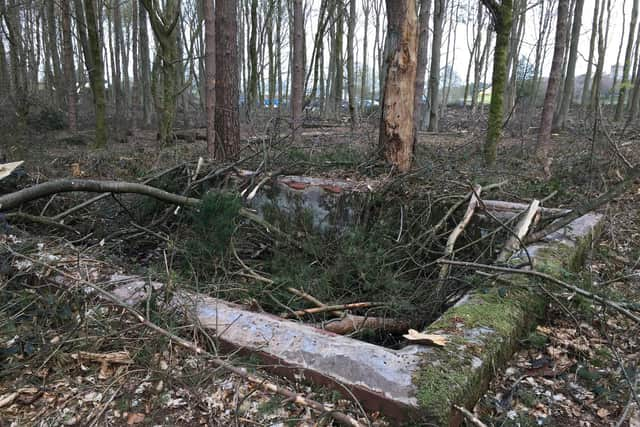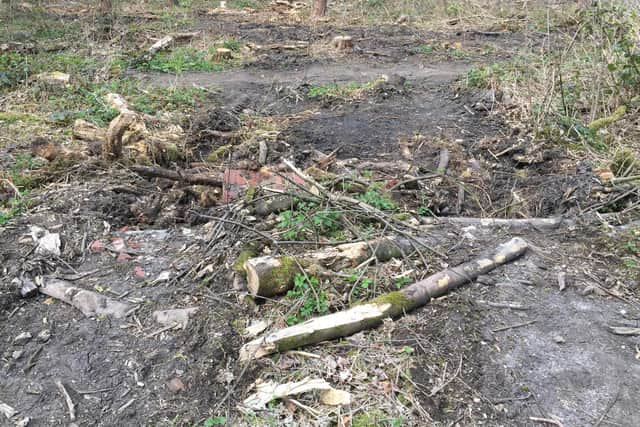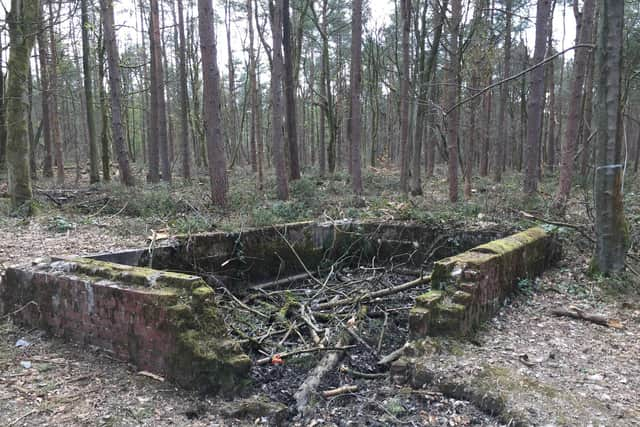Heartbreak as historic Lodge Moor prisoner of war camp damaged by Sheffield Council forestry work


Thousands of people including from Germany, Italy and Ukraine were kept as prisoners in both the first and second world wars at Lodge Moor camp, on Redmires Road.
Its most famous prisoner was a German admiral who escaped and succeeded Hitler as president of the German Reich.
Advertisement
Hide AdAdvertisement
Hide AdMany still visit the remains today, including those whose family were kept there, and there are more than 460 members in a Facebook group dedicated to the site’s heritage.


But recently visitors claimed forest thinning work damaged large concrete bases of the prisoners’ dorms, broke one of the toilet blocks and crushed remnants of sewage piping.
Jess Ghost, a regular visitor to the site, said: “The POW camp has a rich and long history, making it important not just to local people who have memories of the world war two camp from the time, but nationally and internationally: it was the largest POW camp in Britain and there is a global community of people whose parents and grandparents had connections to the site.
“When you visit the site, its history becomes alive – regardless of the tree coverage and the banks of nettles and brambles, the remains are obvious, and the vastness of the site is immediately apparent.
Advertisement
Hide AdAdvertisement
Hide Ad“It’s not just that you can see how many long dormitory huts were here and how many people they must have housed, but you can explore see the steps they walked up and down, the places were they showered, and clearly envisage what their daily lives must have been like during one of the most turbulent periods in history.


“It’s vital we have physical access to these spaces and they are respected for what they represent.
“In my view, it’s a dereliction of duty and care, and I was heartbroken to see what had been allowed to happen to this very significant site. It’s of the utmost importance the site is properly protected so it can never be damaged in this way again.”
The council said the forestry thinning work was essential and improved access for archaeological work.
Advertisement
Hide AdAdvertisement
Hide AdRuth Bell, head of parks and countryside, said: “The encampment site was decommissioned and flattened after the war so building debris is strewn across the site and the thinning work has exposed more of this. We acknowledge some minor disturbance was caused and this will be rectified. A site visit and recommendations were made by the South Yorkshire Archaeology


Service and further remedial work will take place later this year.
“Now the forestry work is complete we continue to work with archaeologists to help them interpret the site as part of the Heritage Lottery Fund project. The additional features exposed by our thinning work will be recorded as part of this. We will also be working with the local Friends Group so they can be involved in future developments and projects to help improve Redmires as a wildlife, amenity and heritage site.”
Comment Guidelines
National World encourages reader discussion on our stories. User feedback, insights and back-and-forth exchanges add a rich layer of context to reporting. Please review our Community Guidelines before commenting.